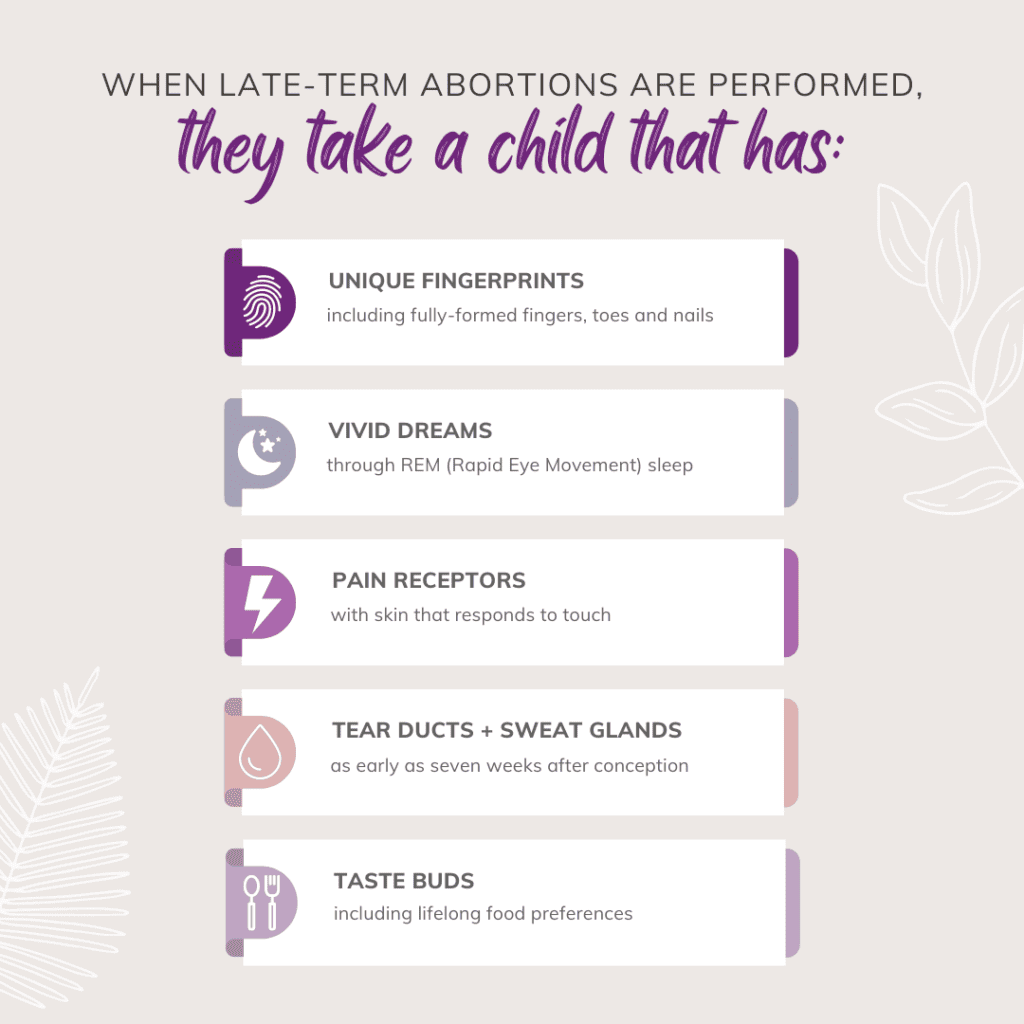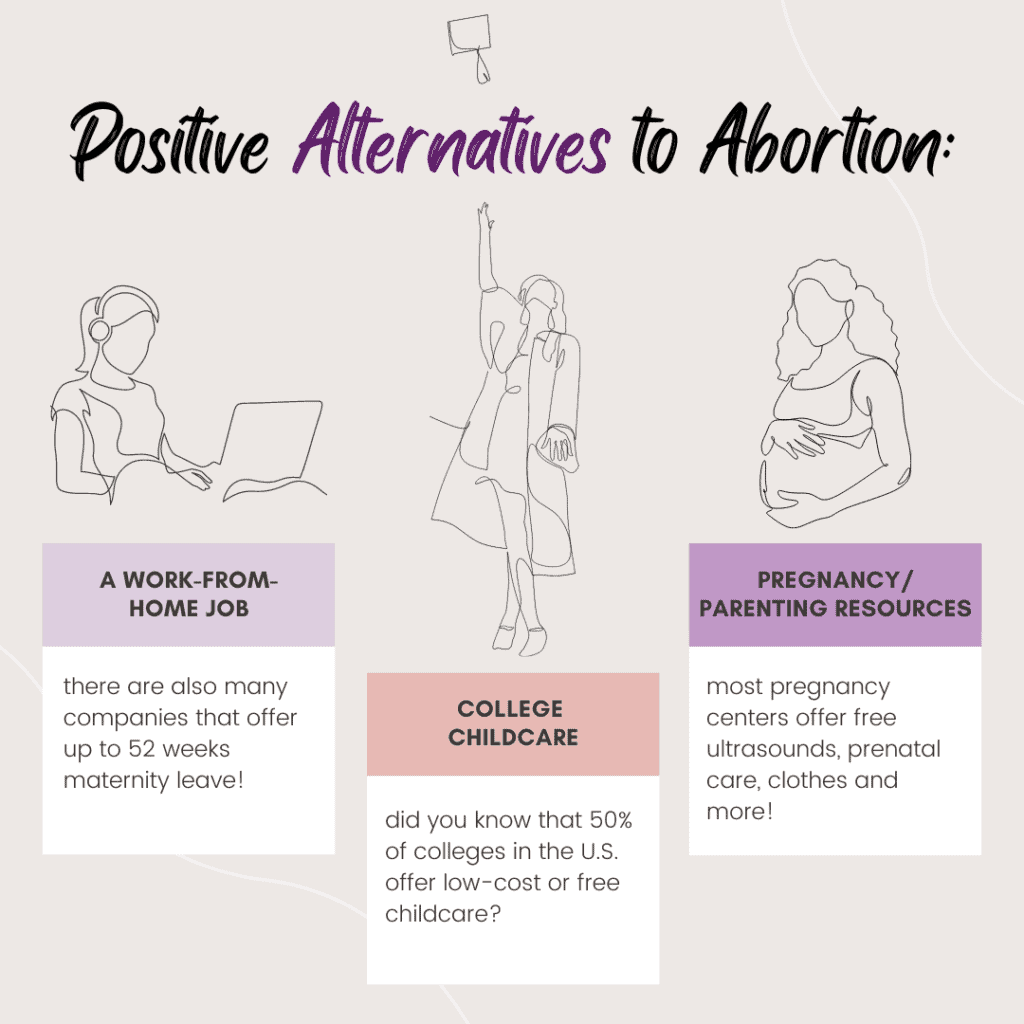Financial burden. Career. Education. Single motherhood. Other children. Though these are often only correlated with the more common types of abortion (6-18 weeks), the main reasons women decide to end their pregnancy don’t shift when moving past the 20-week mark. In fact, reasons for late-term abortions cite finances and work above physical harm and abnormalities. And, though only legal in eight states, this type of abortion still manages to account for over 15,000 procedures performed each year. This heavy societal impact warrants a proportional discussion and revisitation of it’s part in our world today.
Pro-choice doctors and organizations are steering away from dubbing later abortions as “late-term,” as they believe it implies the woman has reached full-term in her pregnancy (or 37 weeks). Even so, viability plays a role in the conversation and can mean the child’s last stages before birth are much earlier than typically expected. Due to the controversy in language, there is no precise definition of what a late-term abortion is, but it is generally considered to be met after 20 weeks of pregnancy. There are a few options when abortion is performed late:
Performing late-term abortion takes a child from the world that already has:

Yet, abortions at this stage, even with a strong chance of viability, are still fully legal. States with limited or no restrictions include Arkansas, Colorado, Washington D.C., New Hampshire, New Jersey, New Mexico, Oregon and Vermont.
When the Supreme Court made the landmark decision for the legalization of abortion in Roe v. Wade, they provided a vague explanation for the potential of viability and the ability for states to perform late-term abortions:
“We need not resolve the difficult question of when life begins. When those trained in the respective disciplines of medicine, philosophy, and theology are unable to arrive at any consensus, the judiciary, at this point in the development of man’s knowledge, is not in a position to speculate as to the answer.”
Meaning: states are now granted the power to decide when there is the ability to live independently from the womb. Unfortunately, this is an entirely case-dependent concept and leaves plenty of room for error. The Court also wrote the specification under the medical knowledge of 1973, which believed viability wasn’t a possibility until the third trimester of pregnancy (27 weeks on). But, we now know that at 22 weeks, there is a 10% chance of survival, and at 24 weeks, there is a 40-70% chance. So, by the Supreme Court allowing states to deny late-term abortion regulation, there is a substantial likelihood of aborting a baby that could survive outside of the womb.
Since late-term abortions are both societally present and fully legal in areas of the country, sharing positive alternatives to abortion and encouraging women throughout their journey of motherhood can make all the difference.

Pro-lifers must take opportunities to help foster a loving and worthy experience past the abortion decision. Sharing these alternatives could help countless women and, ultimately, save lives.
Late-term abortions are happening right now in our backyard. So, the next time you’re wondering if being pro-life is a worthy cause, look around you.
Notice the vacancy.
15,000 of those unique, missing souls were within days of making it. Together, we must try and shine a light on that absence so the world may know life without loss from abortion.
The post Are Late-Term Abortions Still A Thing? appeared first on Focus on the Family.
Continue reading...
What Are Late-Term Abortions?
Pro-choice doctors and organizations are steering away from dubbing later abortions as “late-term,” as they believe it implies the woman has reached full-term in her pregnancy (or 37 weeks). Even so, viability plays a role in the conversation and can mean the child’s last stages before birth are much earlier than typically expected. Due to the controversy in language, there is no precise definition of what a late-term abortion is, but it is generally considered to be met after 20 weeks of pregnancy. There are a few options when abortion is performed late:
- One method is Extraction (or partial-birth). First, lethal injection is administered into the child’s heart to eliminate chances of survival. The abortion provider then induces labor and delivery in a process very similar to birth, even to the point of an epidural and delivery in the hospital’s maternity ward.
- The other method – Dilation & Evacuation – is most commonly chosen. After a similar lethal injection to the fetal heart, the uterus is softened and dilated as dismemberment and removal occur. After, there are often abortion complications and intense side effects.
Is The Baby Developed Yet?
Performing late-term abortion takes a child from the world that already has:
- Skin that responds to touch and can feel pain
- Taste buds that are developing enough to discern what their mother eats
- Fully developed fingers and toes, each with a unique fingerprint
- The increasing ability to respond to sounds
- Dreams (through REM sleep)
- The ability to suck their thumb
- Hiccups
- Head and body hair
- Coordinated limb movements
- Forming sweat glands
- Developing tear ducts
- A heartbeat that can now be heard through a stethoscope

- A digestive system already preparing for post-birth
- The ability to breathe
- Their lifelong reproductive system
Yet, abortions at this stage, even with a strong chance of viability, are still fully legal. States with limited or no restrictions include Arkansas, Colorado, Washington D.C., New Hampshire, New Jersey, New Mexico, Oregon and Vermont.
Why Is This Legal?
When the Supreme Court made the landmark decision for the legalization of abortion in Roe v. Wade, they provided a vague explanation for the potential of viability and the ability for states to perform late-term abortions:
“We need not resolve the difficult question of when life begins. When those trained in the respective disciplines of medicine, philosophy, and theology are unable to arrive at any consensus, the judiciary, at this point in the development of man’s knowledge, is not in a position to speculate as to the answer.”
Meaning: states are now granted the power to decide when there is the ability to live independently from the womb. Unfortunately, this is an entirely case-dependent concept and leaves plenty of room for error. The Court also wrote the specification under the medical knowledge of 1973, which believed viability wasn’t a possibility until the third trimester of pregnancy (27 weeks on). But, we now know that at 22 weeks, there is a 10% chance of survival, and at 24 weeks, there is a 40-70% chance. So, by the Supreme Court allowing states to deny late-term abortion regulation, there is a substantial likelihood of aborting a baby that could survive outside of the womb.
- Broadcast: Abortion Survivors Tell Their Stories
- Abortion Survivors: Does God Forgive Abortion?
- See Life 2021: The Power of a Picture
How Can We End Late-Term Abortion?
Since late-term abortions are both societally present and fully legal in areas of the country, sharing positive alternatives to abortion and encouraging women throughout their journey of motherhood can make all the difference.
- Most women receiving abortions are 18-22; therefore, education is understandably a concern. However, many people don’t know that roughly half of all colleges offer easily accessible and reliable childcare. (Here’s a list of the best colleges for new mothers!)
- Pregnancy resource centers can ease financial fear through their free services such as pregnancy testing, STD testing, ultrasounds and more free of charge (find your nearest one here). Additionally, centers can often come alongside mamas post-birth with essentials like diapers, food and clothing.
- A community can be life-changing. Organizations like Embrace Grace and other faith-based non-profits come together with churches and offer support groups, baby showers, mentorship and even men’s programs!

- If a prosperous career seems lost amongst motherhood, some companies offer up to 52 weeks of maternity leave. In addition to checking with your current employer, you can also find some work-from-home options here.
Pro-lifers must take opportunities to help foster a loving and worthy experience past the abortion decision. Sharing these alternatives could help countless women and, ultimately, save lives.
Late-term abortions are happening right now in our backyard. So, the next time you’re wondering if being pro-life is a worthy cause, look around you.
Notice the vacancy.
15,000 of those unique, missing souls were within days of making it. Together, we must try and shine a light on that absence so the world may know life without loss from abortion.
The post Are Late-Term Abortions Still A Thing? appeared first on Focus on the Family.
Continue reading...





